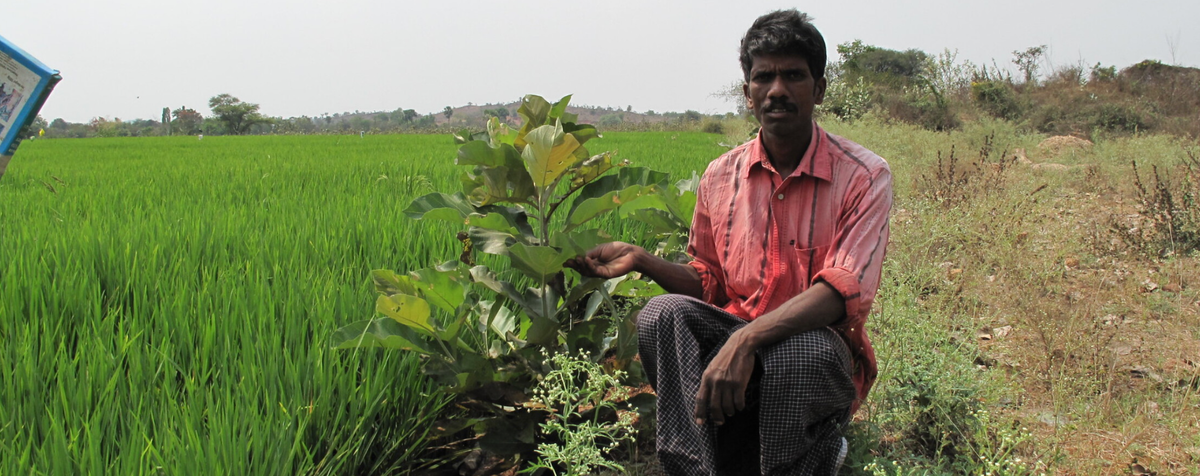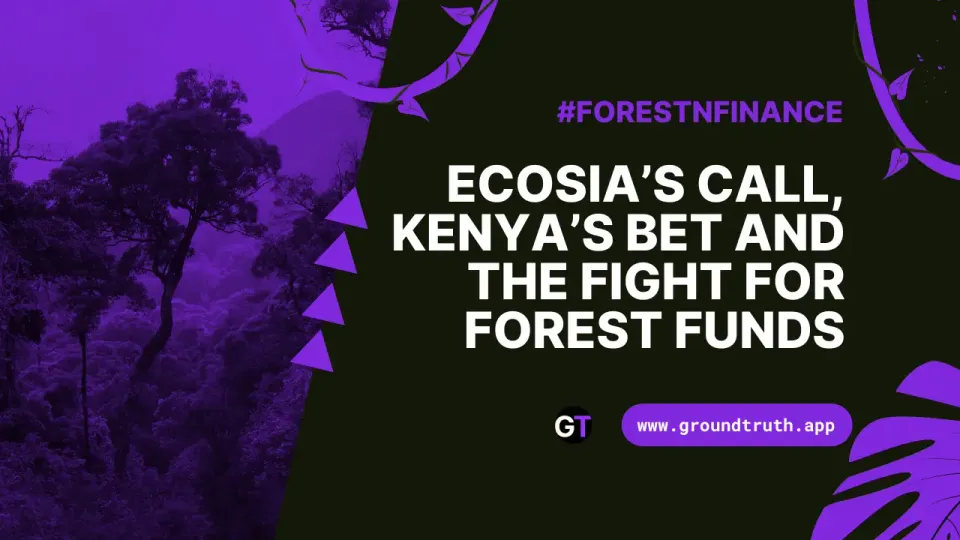Planting the Future: Crops and Conservation in Harmony 🌱
“Conservation efforts and the production of wood for societal and economic needs can co-exist and not necessarily contradictory,”

This article by Kundan Pandey originally appeared in Mongabay.
- India’s conservation policies stifle agroforestry growth says a new working paper. Some other experts, disagree.
- India’s conservation focus and complex policies are preventing it from reaching its agroforestry potential, leaving it to rely on timber imports, the paper claims.
- Agroforestry, a land-use system integrating trees and crops, is regaining attention for its livelihood resilience, food security, and climate benefits.
While agroforestry has the potential to combat climate change, India’s conservation-focussed forestry is hindering its growth, says a recent working paper. Agroforestry is a land management system that integrates crops and woody perennials like trees, shrubs, palms, bamboo etc.
“Conservative-led (sic) forest policies have primarily focussed on increasing the area under the forest, but they have significantly hindered the growing of trees outside the forest,” says the paper authered by Sanjeev Sanyal, a member of the Economic Advisory Council to the Prime Minister (EAC-PM) of India, Karan Singhal and Naveen Bali. Bali works with a consulting firm Koan Advisory.
It further explains, “The National Forest Policy of 1988 aimed to increase forest and tree cover and restricted the felling of trees without forest department approval. Further, in the Godavarman case (1996), the Supreme Court redefined the scope of forest conservation and suspended tree felling across the entire country. Such policies have discouraged private players (especially farmers) from entering the timber-growing business.”
The paper, supporting agroforestry, highlights the fact that agroforestry plantations in India are spread across 28 million hectares, which is only 17% of total agricultural land. This is far less than the global average of 43%.
The paper gives year-wise data to explain the impact of various events on India’s roundwood imports over three decades between 1991 and 2021. The Supreme Court ruling in the T.N. Godavarman case in 1996 which coincided with liberalisation of the import policy of wood and wood products, led to a temporary increase in the import of roundwood.
Following a series of rise and drops, the imports peaked around 2013 and then declined in 2014 after Myanmar and Malaysia, key exporters of wood from India, banned log exports or reduced their export quotas. Later, the imports showed some recovery.
The paper concludes that the stringent regulations in India’s policy led to a four-fold increase in the country importing industrial round wood between 1996 and 2022.
However, other experts who have reviewed the EAC-PM paper do not agree with its observation. “Conservation efforts and the production of wood for societal and economic needs can co-exist and not necessarily contradictory,” says T.R. Manoharan, an economist and sustainability expert with experience in environmental economics and forest conservation policies. “In fact, conservation can support the creation of additional wood supply for the society.”
He explains that unsustainable wood harvesting practices in the past led to the National Forest Policy of 1988, which prioritised conservation. The paper now brings this data into a new context, highlighting that these conservation measures have extended beyond recorded forests, particularly after the Godavarman case (1996). But that was the need of the hour. “Many studies have shown that wildlife and biodiversity are much more, in some cases, outside of the protected and recorded forest area. So, we cannot leave these rich biodiversity areas, whether it is agroforestry, farm forestry or other forest ecosystems. These areas are equally important if we look at the landscape approach,” he said. So, there is no point in changing conservation policy objectives, he says.

“If we will give a lot of relaxation or exemption for timber production without safeguarding conservation, then we will be losing many other ecosystem services. Trees cannot be only looked at from the timber perspective,” he adds.
Naveen Bali, one of the authors and a senior manager at Koan Advisory, clarifies, “In our paper, we are not talking about changing forest policies or disturbing existing forest areas. The focus is simple: farmers should be allowed to manage trees on their land. The problem is, there are too many checks in place preventing this. We also don’t want to encourage illegal felling of trees.”
The definition of a “forest” has come under controversy in the recent past as the government of India’s amendment to the Forest (Conservation) Act in 2023 reduced the scope of applicability of the 1996 Godavarman judgment that says that all forests resembling “dictionary meaning” would be entitled to protections under the Forest (Conservation) Act, irrespective of ownership and status. When asked about the ongoing debate regarding the definition of forests and the timing of the paper, Bali denies any connection and says that their paper specifically focuses on areas outside forests. “This is about providing added benefits to existing crops through agroforestry. Trees have their own benefits—they increase soil fertility, carbon content, and overall income. Simply having trees on farmland can boost farmers’ income, and that’s the key area we are addressing,” he explains.
There is consensus that agroforestry can boost farmers’ income, and there is a global push to motivate farmers to adopt agroforestry.
“Agroforestry systems can improve livelihood resilience and food security for farmers,” says the United Nations Food and Agriculture Organisation (FAO). The long-standing practices of integrating trees with crop and animal farming systems are gaining renewed importance and can benefit one billion hectares of degraded land, the global body says.
However, the EAC-PM working paper claims that India’s agroforestry sector remains under-utilised and stifled by regulation.
Bali says that agroforestry is not a new topic. “There has been a lot of buzz, including from NITI Aayog, where they aim to double farmers’ income. Agroforestry is a low-hanging fruit in this context,” he says.
Agroforestry as climate action
A separate study on agroforestry and climate change, published in February, claims that India, a country that is highly vulnerable to climate change, can benefit from promoting agroforestry. The paper lists the climate benefits of agroforestry such as enhancing carbon sinks by absorbing atmospheric carbon through photosynthesis and storing it in the biomass and soil. However, the benefits of carbon sequestration vary depending on a number of factors like species type and management practices, it notes.
Agroforestry also slows down deforestation by reducing the pressure of human needs like fuel and fodder on natural forests, says the study by researchers from the Indian Institute of Technology, Kharagpur, TERI School of Advanced Studies and Asian Development Bank Institute.
The study adds that agroforestry systems can help reduce the loss of nitrogen from the soil caused by erosion, runoff, or leaching. They store the nitrogen in the soil, thus lowering the need for extra nitrogen on farms, reducing the need for external fertilisers, and helping fight climate change. Farmers also witness an increase in farm profitability, thus helping in climate change adaptation, too.

“..a 30% increase in agroforestry area has the potential to significantly reduce emissions from India’s energy, agricultural, and industrial sectors, given the capacity for carbon sequestration,” says the study.
Complex regulation a challenge
The EAC-PM paper of September 2024 highlights another challenge that discourages farmers from pursuing agroforestry — a complex regulatory system. The paper says that each state has several acts that regulate growing, harvesting, and transporting trees from private land. In addition to the multiple acts in each state, there are around six departments that oversee and provide the essential permits to farmers for harvesting trees on their farmland.
It gives examples of several states. For example, in Madhya Pradesh, four acts determine the rules around felling and transit.
“This complexity creates the need for middlemen who then charge a share of the consumer price, leading to lower margins for farmers, which discourages them from adopting agroforestry,” it says.
The spokesperson of the South Indian Plywood Manufacturers Association also noted that states often make knee-jerk policy decisions in response to challenges, which creates difficulties for farmers growing trees. He cited the example of the Kerala Preservation of Trees Act (KPTA), which prohibits the felling of trees, with a few exceptions. As a result, farmers cut trees before they fully mature, fearing that if the trees continue to grow, their land may be classified as a forest area or buffer zone.
Experts say that this complexity is because the governance of forest comes in the concurrent list of the Constitution, which means both the states and the centre have the authority to make laws on it. The subject of forests, earlier in the state list, was moved to the concurrent list by the 42nd Constitution Amendment of 1976 which states that the union government is responsible for policies and laws to regulate the reserved forests while state governments are responsible for, the governance and management of trees outside forests, including agroforestry plots.
T.R. Manoharan says that given the country’s diversity, the variations in state specific laws on conservation will remain to meet the national forest policy objectives. The states have made their local policies and laws according to its understanding and requirement of protecting trees in the local context. The need for additional conservation measures for protecting trees will not be the same across the states, so their policy priorities will also be different, he explains.
Bali suggests creating a foolproof system for tracking the cutting and transportation of trees, possibly through digital means or blockchain. “There are existing portals that allow online applications, but only three states are currently using them – West Bengal, Telangana, and Jammu & Kashmir. Transition permits are in place at the existing portals, but growing permits should also be added to these platforms, creating a single-window clearance system for farmers interested in agroforestry.”
Manoharan adds that there needs to be a proper mechanism to ensure that trees are valued for the ecosystem services they provide at their geographical location. There are procedural bottlenecks in the way these policies are implemented, and he says they should be looked at and revised, cautioning against any move to revise national conservation policy objectives.

The paper also highlights that certain species have been exempted from permit requirements, but the exemptions are not consistent across states and do not exempt the harvesting of native high-value timber species like teak, meranti, and gurjan. “Given that teak is one of India’s most abundant native species, it presents an opportunity for India to move from being import-dependent to being an export leader of teak in the world,” it says. The paper recommends deregulation of high-value native timber species.
Manoharan cautions here, too, by saying that several studies have shown that large trees are actually disappearing fast. If the conservation of these trees is further liberalised, it may result in these trees disappearing even faster. The gestation period of such large trees is sometimes more than 100 years, but until they grow, the older trees may be harvested, unless additional conservation measures are effectively implemented taking into account local/state level contexts.
The paper highlights a data challenge by saying that the government of India does not maintain a centralised database of timber production. Manoharan agrees that data needs to be strengthened for two purposes related to traceability. India will face concerns from the International Research organisations questioning the growing import of illegal wood and an increase in unrecorded tree removals domestically. India may face difficulties supplying timber to leading international markets, especially the European, North American, and other developed country markets as a result of timber legality requirements which are becoming more stringent. To address this, forest certification, including certification of trees outside recorded forests (ToF) areas should be encouraged.
He says that any policy change on conservation requires more research and careful consultation with all the stakeholders, including local communities.
License
Kundan Pandey. "Balancing Conservation and Agroforestry to Tackle Climate Change." Originally published on October 24, 2024. Republished under a Creative Commons Attribution-NoDerivatives 4.0 International (CC BY-ND 4.0) license wit hchanges to title, formatiing and images.




